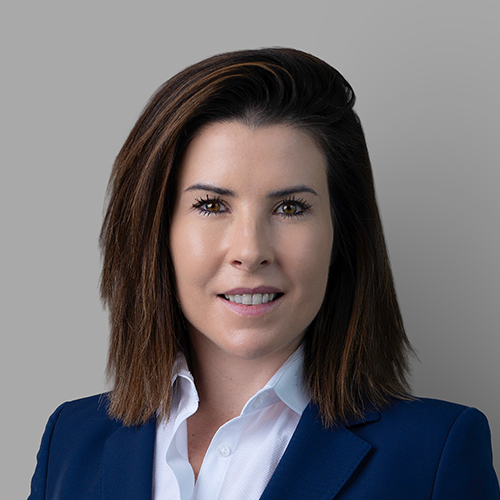Across global markets, climate risk is fast becoming a defining issue for industrial real estate.
Rising temperatures, shifting precipitation patterns, and more frequent extreme weather events are starting to influence how occupiers and investors assess location, infrastructure resilience, and long-term asset value. While much of the global data currently focuses on North America, Europe, and APAC, the Middle East has unique exposure patterns that demand closer attention.
According to Cushman & Wakefield's Climate Risk: Logistics & Industrial Global Outlook (2025), climate hazards like flooding, heat stress, and wind exposure are set to worsen across all regions. Yet regional disparities are stark. For example, APAC markets such as Singapore and Sydney are already integrating climate risk into planning frameworks. In contrast, the Middle East was notably absent from the global deep dives, despite being home to one of the world’s hottest and driest climates and a growing concentration of logistics investment.
"Environment and climate have always been integral to our master planning," explains Mohamed Al Khadar Al Ahmed, CEO of Khalifa Economic Zones Abu Dhabi (KEZAD Group), one of the region's largest operators of integrated economic zones. "We address everything from sea-level rise to cross-contamination risks by embedding sustainability and resilience into zoning, infrastructure, and utilities."
At KEZAD, only 60% of land is allocated for development, with the remaining 40% preserved as open space to enable natural buffers. Infrastructure design accounts for rainwater separation, greywater reuse, and pre-treatment protocols to safeguard marine and groundwater ecosystems. KEZAD Al Ma’mourah, for instance, is the first Estidama-compliant industrial zone, reflecting a broader commitment to embed climate resilience across Abu Dhabi's industrial platform.
In parallel, a comprehensive climate risk assessment is currently underway across Abu Dhabi Ports Group, encompassing all major ports, industrial zones, and logistics facilities. This study led in collaboration with environmental and engineering consultants is evaluating exposure to sea-level rise, storm surge, heat stress, and wind intensity across coastal and inland assets. The findings will inform infrastructure upgrades, zoning strategies, and asset-level adaptation plans aligned with both UAE Climate Law 2024 and international frameworks like TCFD, TNFC and ISO 14091.
“Climate change isn’t a future problem - it’s already shaping how assets are designed and operated,” says PP Varghese, Head of Professional Services at Cushman & Wakefield Core. “Developers and investors can’t treat it as an afterthought anymore; resilience needs to be built in from the start.”
The urgency is backed by market signals. Institutional capital is increasingly weighted toward low-emission, benchmarked assets, and global tenants are under pressure to decarbonise their supply chains. As one recent report notes, sustainability credentials are no longer a “nice-to-have”- they are becoming a precondition for capital and corporate attention.
“Capital is starting to differentiate between assets that can prove resilience and those that can’t,” Varghese adds. “For landlords, that gap will only get wider as benchmarks tighten.”
Free zone operators in Dubai and Abu Dhabi are also exploring carbon credit frameworks and AI-based energy monitoring tools, while trialling LEED and EDGE certifications. These strategies are still emerging, but the direction is clear: sustainable industrial real estate is becoming a new value benchmark.
Globally, investors are beginning to price in climate resilience at the asset level. According to Cushman & Wakefield's report, occupiers and developers are increasingly factoring in climate mitigation costs at each stage of the real estate cycle: from site selection and planning to divestment. Cold storage and data centres are especially exposed, as energy demand for cooling rises with ambient temperature increases. In the UAE, these pressures are already being met with innovation.
"Most of our investors use natural gas and are actively exploring rooftop solar," notes Mohamed. "We’re also integrating low-carbon concrete, low-emitting paints, and even steel fibre made from recycled tyres into our developments."
The broader question is what role zone operators can play in regional climate adaptation. While municipalities and utilities have long held responsibility for infrastructure resilience, the scale and influence of integrated economic zones gives them a growing role in leading climate strategies.
"As an industrial zone operator, we can influence everything from energy design and cooling technologies to circular economy networks," Mohamed explains. KEZAD is already facilitating waste-to-resource models, supporting startups that turn date palm waste into construction panels or harvest drinking water from atmospheric vapour.
“The Middle East hasn’t yet built a full set of climate benchmarks for logistics assets,” Varghese notes. “That gap is both a risk and an opportunity; those who lead now will have a real edge with global occupiers and investors.”
These kinds of innovations matter. As climate risk becomes more visible to insurers, regulators, and institutional capital, the market will reward zones and assets that demonstrate forward planning. Yet data from the global Climate Risk report suggests many industrial portfolios are still underprepared, with risks either mispriced or ignored entirely in underwriting.
In the Middle East, the absence of robust benchmarking creates both a vulnerability and an opportunity. Regional industrial players who lead in this space may not only de-risk their portfolios but also become climate-aligned partners of choice for multinationals under pressure to decarbonise.
The long-term direction is clear: to build climate-ready logistics assets, developers and operators in the Middle East must prioritise a range of practical strategies. These include incorporating localised climate risk mapping into site selection processes, benchmarking energy and water resilience across their portfolios, and adopting circular economy models for materials and waste. Additionally, engaging in certification schemes such as LEED, EDGE, and Estidama will be key to future-proofing both operational performance and access to capital. What remains to be seen is which developers, landlords, and operators are prepared to build assets for the climate realities of 2050, not just the regulatory minimums of 2025. KEZAD's example shows it's possible. Others would be wise to follow.





